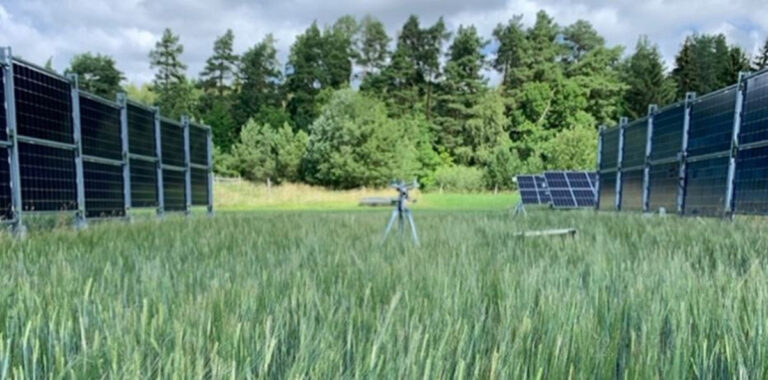Researchers in Sweden have measured barney yields in a vertical agrivoltaic installation and found that despite the shade created by the modules, yields are comparable to those in open field, if not slightly higher. Their methodology can be replicated for other locations and crops.
Researchers from Mälardalen University in Sweden have investigated the effects of a vertical agrivoltaic (APV) system on barley yield and nutrient content in Sweden during the 2023 growing season.
“The dataset shows that barley grown under the vertical APV system has similar yields as under open field conditions, despite the increase in shade due to the vertical panels,” said the study’s lead author, Silvia Ma Lu. pv magazine. “The dataset includes details on grain and straw yield, protein content and starch content, along with weather and solar radiation data from the growing season.”
“The The summer of 2023 was marked by contrasting extremes of dry and warm weather in June, and heavy rainfall in July and August.” co-author, Pietro Campana, added. “More specifically, it was observed that the average barley yield in all different areas of the vertical agrivoltaic system was higher than that in the control area, but not statistically significant.”
The scientists conducted their analysis in a vertical agrivoltaic installation in Kärrbo Prästgård, near Västerås, Sweden. For their assessment of the barley yield, they took into account parameters such as the nitrogen content, the crude protein content, the grain yield, the straw yield, the starch content in the grains and the thousand grain weight (TKW). The results were compared with those of a reference plot without the PV systems.
The samples were harvested by hand on September 7, 2023 at five centimeters from the ground, with each sample corresponding to a square area of 0.25 m2.2. The fresh weight of the samples was measured immediately after cutting. The samples were then dried at 60°C for 24 hours and weighed again to determine the dry matter content (DM).
“The yield of grains and straw was then calculated,” the researchers explain. “An approximation of the same amount of water in the granules and straws when cutting was assumed.”
The group said the proposed methodology could be replicated for other locations and crops.
Their findings were presented in the article “Data on the effects of a vertical agrivoltaic system on crop yield and nutrient content of barley (Hordeum vulgare L.) in Sweden”, published in Data in brief. “The findings support further research into APV systems, for example for the validation of crop models. They also encourage collaboration by sharing field experiment data,” said Ma Lu.
Another research team from Mälardalen University recently developed an algorithm to optimize electricity yield in agrivoltaic installations with vertically mounted double-sided PV modules.
Other researchers at the same university have developed a procedure for identifying and classifying suitable areas for the installation of agricultural voltaic systems.
This content is copyrighted and may not be reused. If you would like to collaborate with us and reuse some of our content, please contact: editors@pv-magazine.com.


